 |
 |
 |
 |
 |
 |
 |
 |
|
Rockhounding on the Stillwell Ranch, Southwest Texas February 2012 In late February I spent a week in southwest Texas to explore a part of the USA that I had never visited before. A friend of mine from Oklahoma, Neil Garrison, met me at the Midland airport and we drove about 4.5 hours to our lodging destination at the Stillwell Ranch. The ranch is located just outside the northeast border of Big Bend National Park and includes thousands of acres of “old west” ranchland. This very remote and picturesque part of Texas has a fascinating and colorful history, much of which is explained in the small museum located at the ranch. The ranch also has a small general store and camping spaces for RVs and tents. An Internet search will provide you with more information about the ranch and its history. Neil and I don’t have a RV, but we had arranged to stay in the “bunkhouse” on the ranch. It wasn’t luxurious, but this old trailer served our needs and was our home for the week.
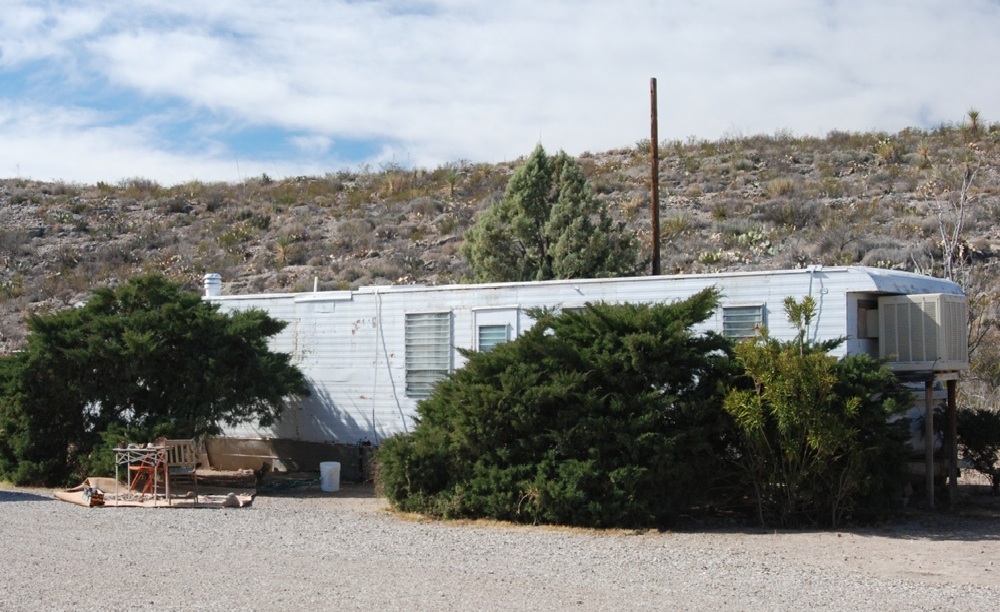 Our primary goals in visiting this interesting part of Texas were to hike and explore the wonders of Big Bend National Park. We made numerous excursions to see the highly variable geology, terrain, archeology and ecology within the park boundaries. Back at the bunkhouse in the evening, we met several of the other visitors who had traveled to the Stillwell Ranch in their RVs. We learned that a couple of these folks were repeat visitors, and that their primary purpose in traveling to the ranch was to go rockhounding! Although I was aware that the geology of the area was quite interesting, I had no idea that the Stillwell Ranch catered to rockhounds. Now, this visit to Texas was getting even more interesting! Upon inquiry, I learned that the most productive rock collecting location was on the gentle hillsides near the “black water tank” about 5 miles east of the Stillwell Store. One of the rockhounds visiting the ranch offered to take Neil and me on a collecting trip the following morning. We happily accepted the offer. There’s no better way to learn about an area than to have a knowledgeable guide show you the way! During our adventure to the water tank area, we learned that the primary objective of the rockhounds was to find high quality plume agate, moss agate and colorful jasper. These desirable lapidary rocks are found within ancient gravel terrace deposits that cap some of the ridges and hills in the area. The hills in the middle distance in the photo below show the terrain on the Stillwell Ranch where the gravel terrace deposits occur.
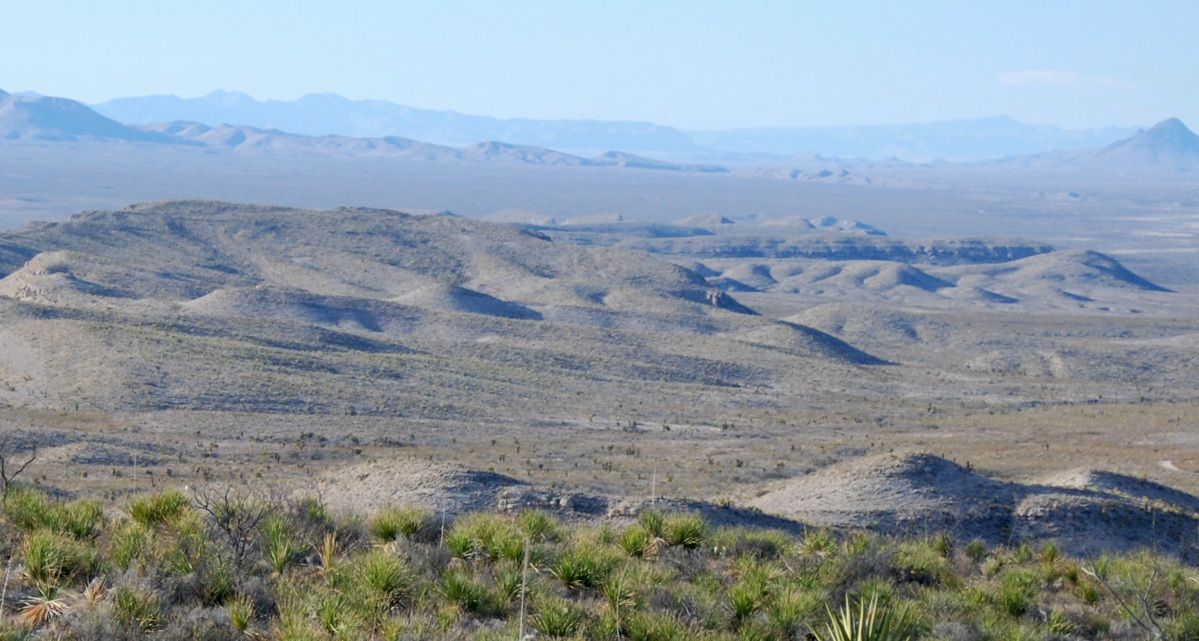 Once we arrived at our destination near the black water tank, we found that the terrace gravel consisted of an enormous variety of rocks. The terrace deposit represents the remnants of ancient erosion of several thousand feet of sedimentary and volcanic rocks located to the north. The gravel and cobbles exposed on the ground, between the thorny brush and cactus, included finegrained basalt, rhyolite, tuff (heat-welded volcanic ash), limestone, chert, petrified wood, chalcedony, agate and jasper. The agate and jasper represented only a tiny fraction of the terrace gravel, the proverbial “needle in the haystack.” But there was a secret to spotting the good stuff. The chalcedony, agate and agate-rich zones of jasper typically had a thin, white oxidation/hydration layer, or patina, on the outer surface of the agate. The piece of translucent agate below shows how this opaque patina forms a white skin on the rock. The secret to success was spying rocks that had white patina, or patterns of white, on a rock that was otherwise gray, red or brown. 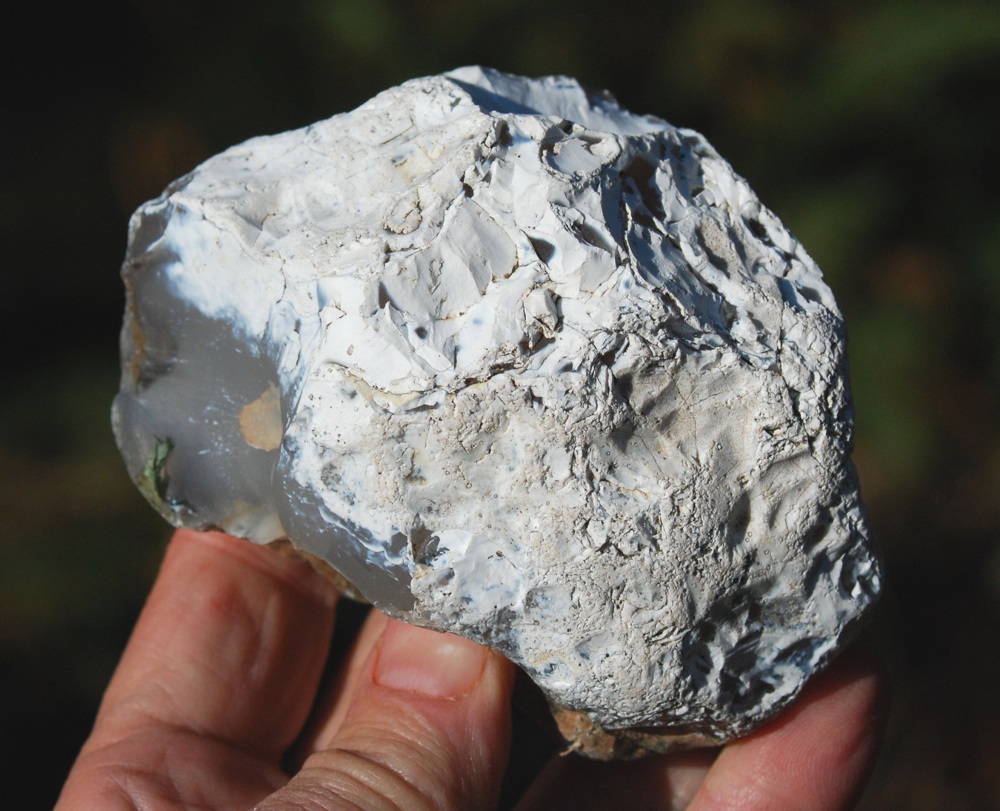 The photos below show two different sides of the same piece of banded jasper. The top photo shows the side of the rock that was exposed at the surface. Note the white patina following the more agate-rich seams in the stone. The second photo shows the interior of the rock and the typical thickness of the patina skin. 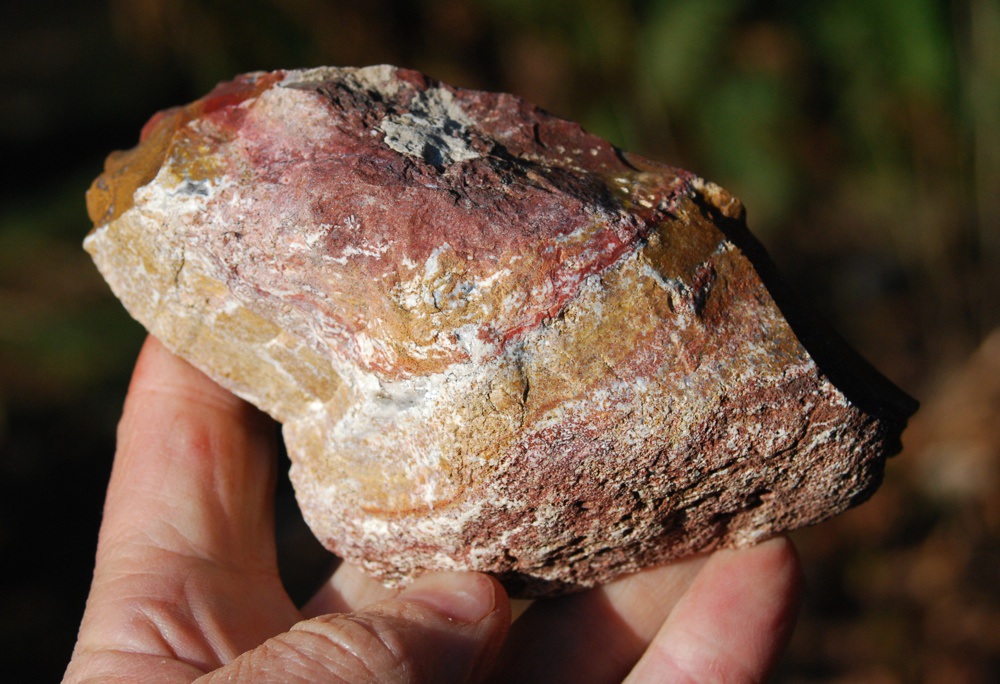
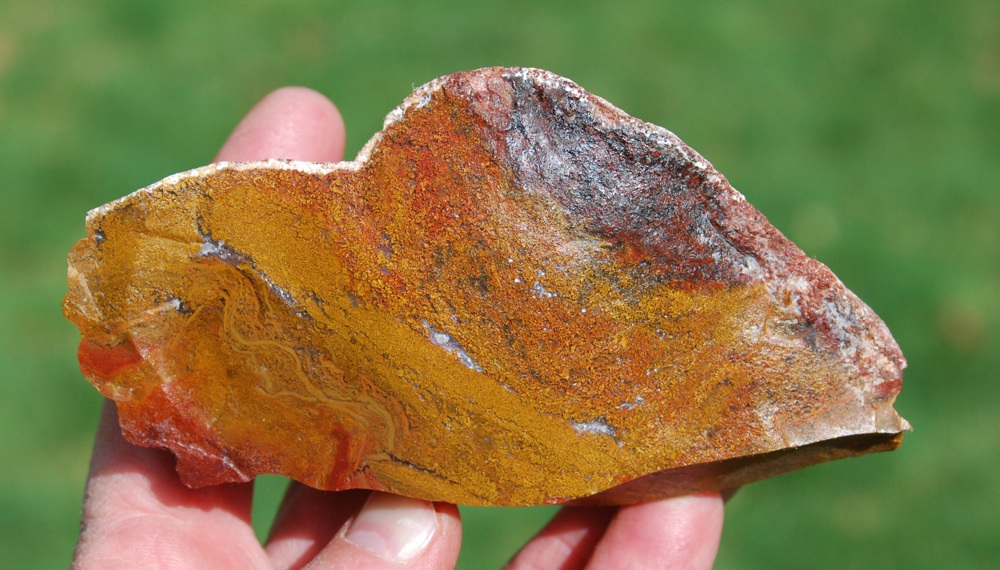 In two separate visits to the collecting area and a total of about 6 hours of hillside wandering, I picked up about 40 pounds of beautiful rock from Stillwell Ranch property. The ranch charges a mere 50 cents per pound for raw rock that you find and remove from the property. Neil was kind enough to mail my treasures home by USPS Priority Mail. The variety and quality of jasper and agate that I found was amazing. The jasper typically is mixed with at least 10 percent agate in exquisite swirls and plumes. Three of the whole rock pieces that I found are show below. 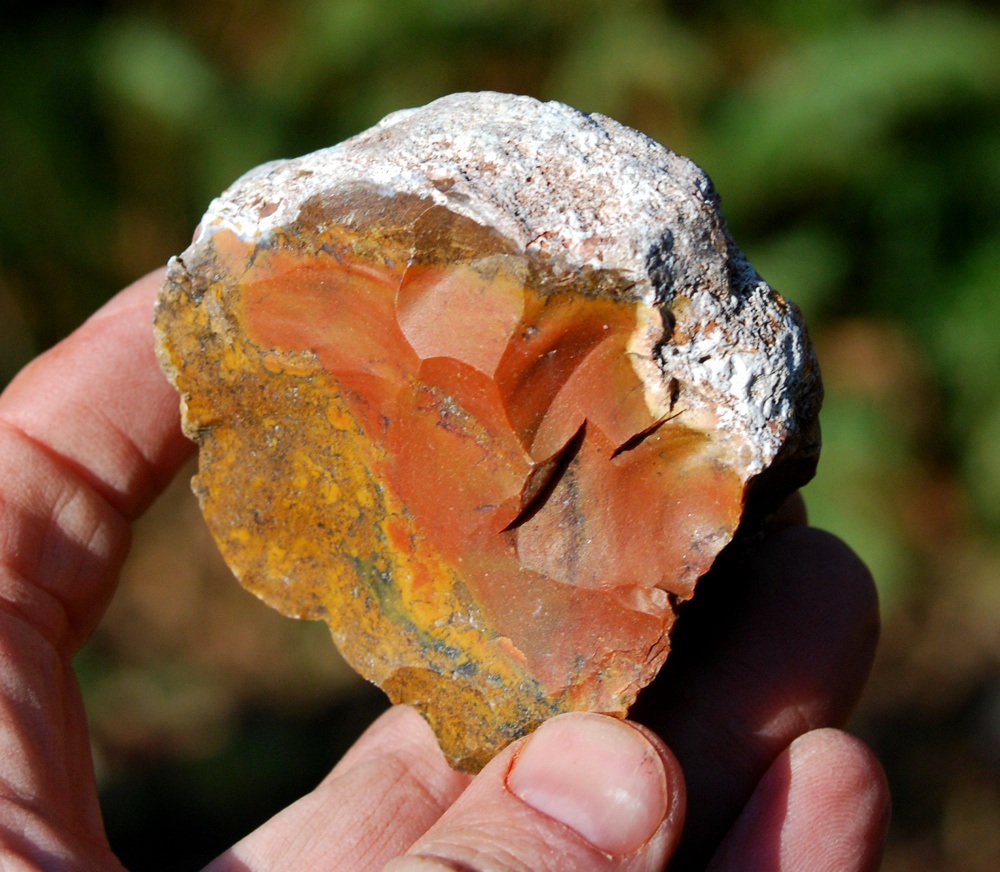
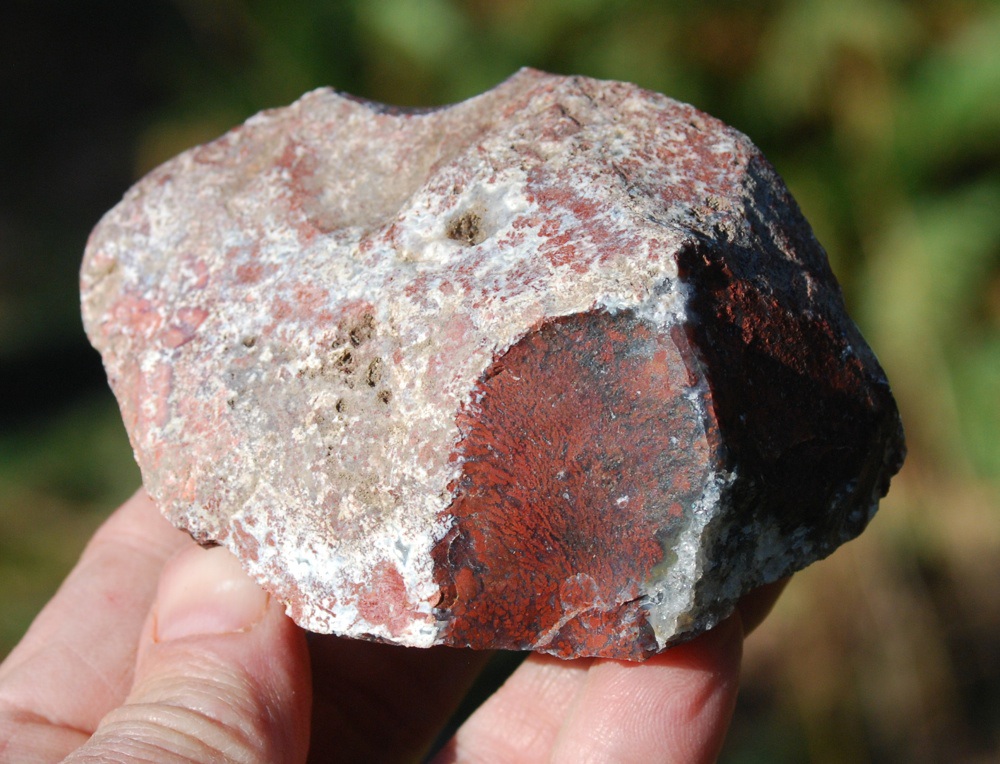
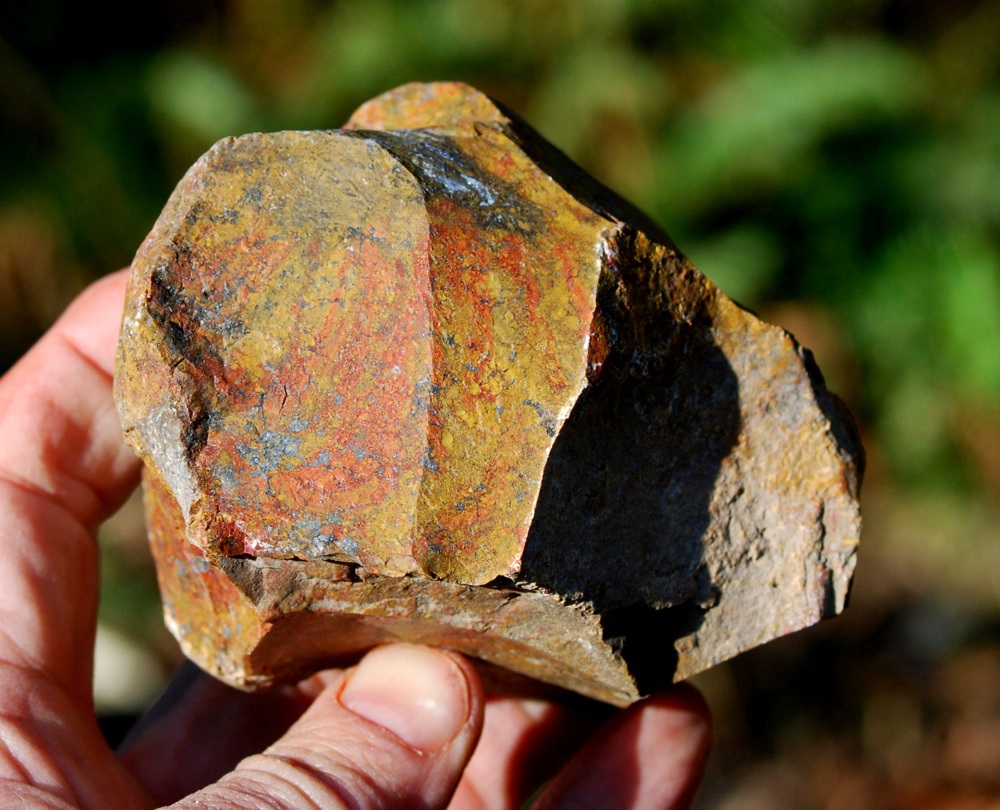 Of course, I couldn’t wait to slice up some of this beautiful rock at home. The photos below show slices of some of the varieties of jasp-agate and moss agate that I found in the terrace gravel. WOW! You can get lost in the color and complexities of the moss agate.  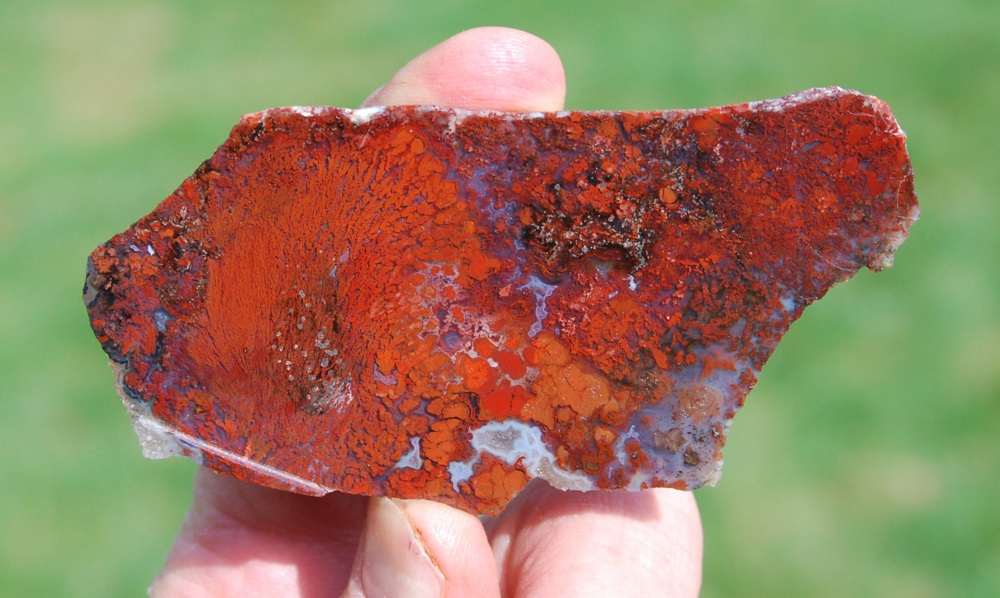

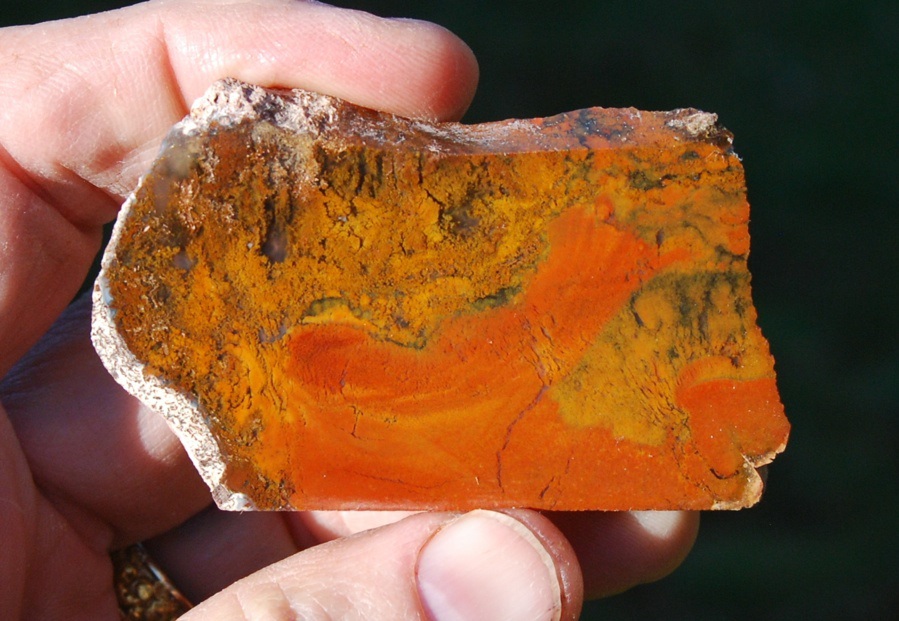
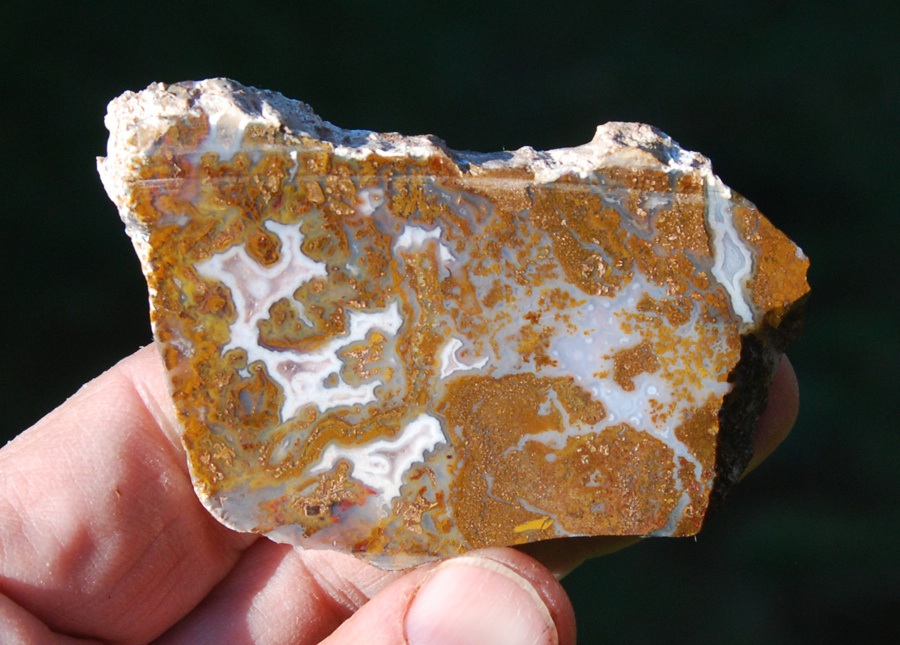 People have searched for useful stone in the hills of the Big Bend area for thousands of years. Native Americans traversed the area for millennia seeking stone that could be used to make sharp-edged tools like knives and arrowheads. While searching the slopes, I often found discarded stone flakes that had been removed from rocks in the past to test their color and workability. Many of these flakes were made by recent visitors, but some of the flakes had significant patina on them, indicating that they were quite old and made by Native Americans. The photo below shows a jasper biface (or preform) that I spotted peeking out of the ground in a small erosion channel on one of the hillsides. This piece of flaked jasper is likely several centuries old.
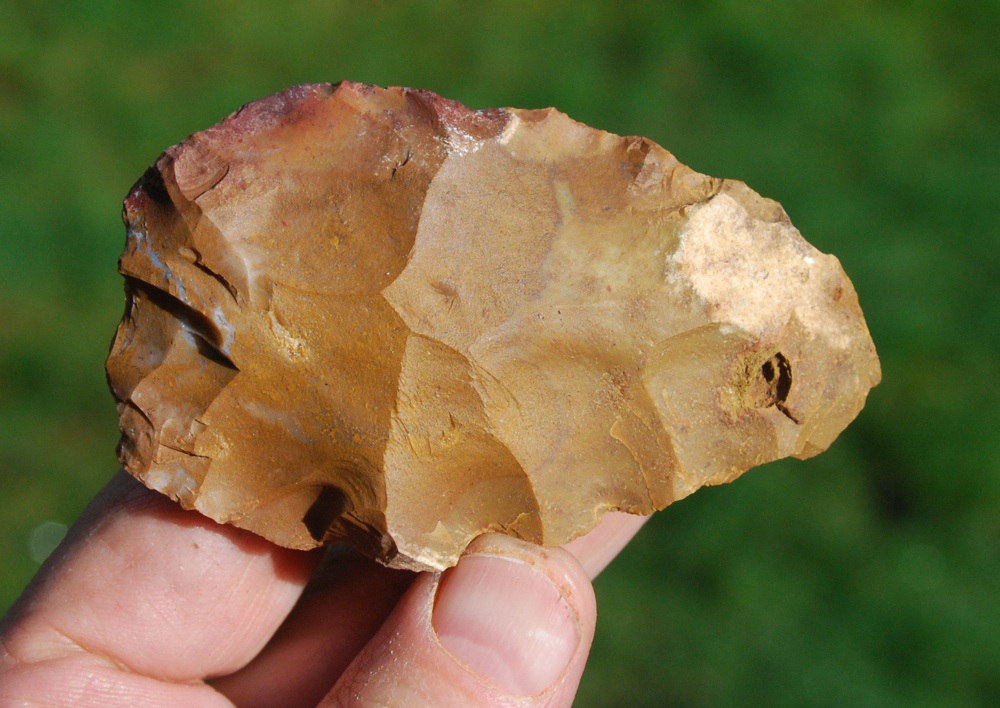 I understand why the Native Americans were interested in some of the stone varieties in the gravel terrace deposit. Much of the agate, jasper and petrified wood flakes very well. The photo below shows a colorful collection of arrowheads that I made out of rock that I found at the Stillwell Ranch. 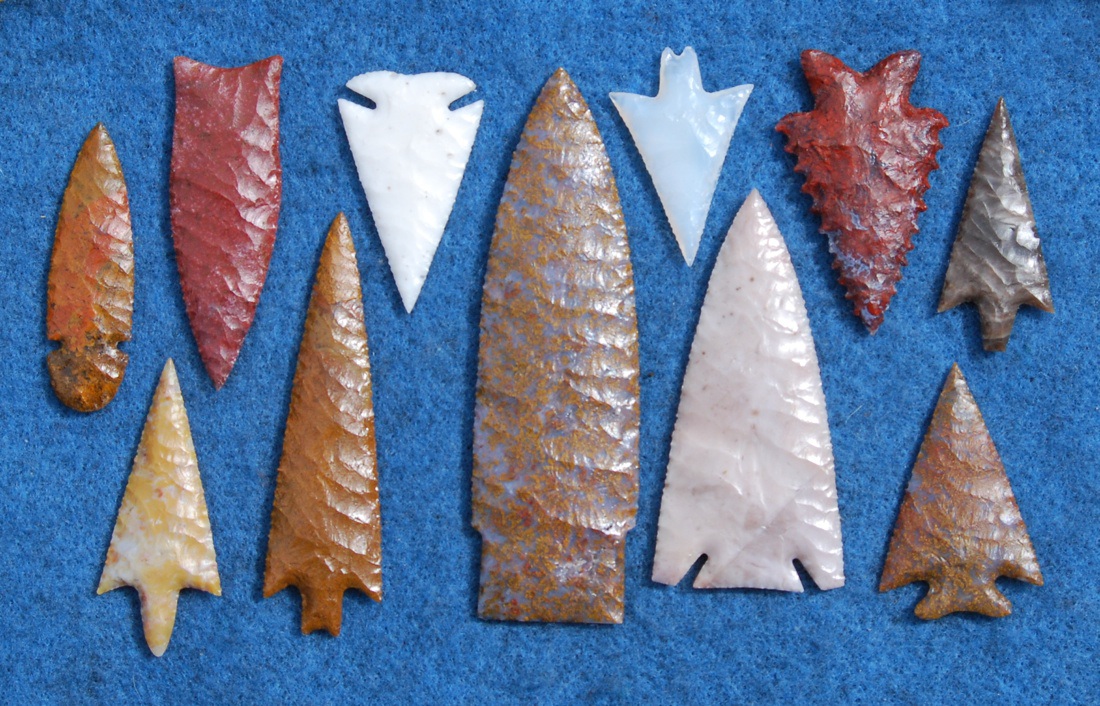 Most of you readers are lapidary enthusiasts, not flintknappers. The photo below shows a sphere that Dennis Borden made for me out of the center of the largest piece of moss agate that I found on the Stillwell Ranch. Nice! 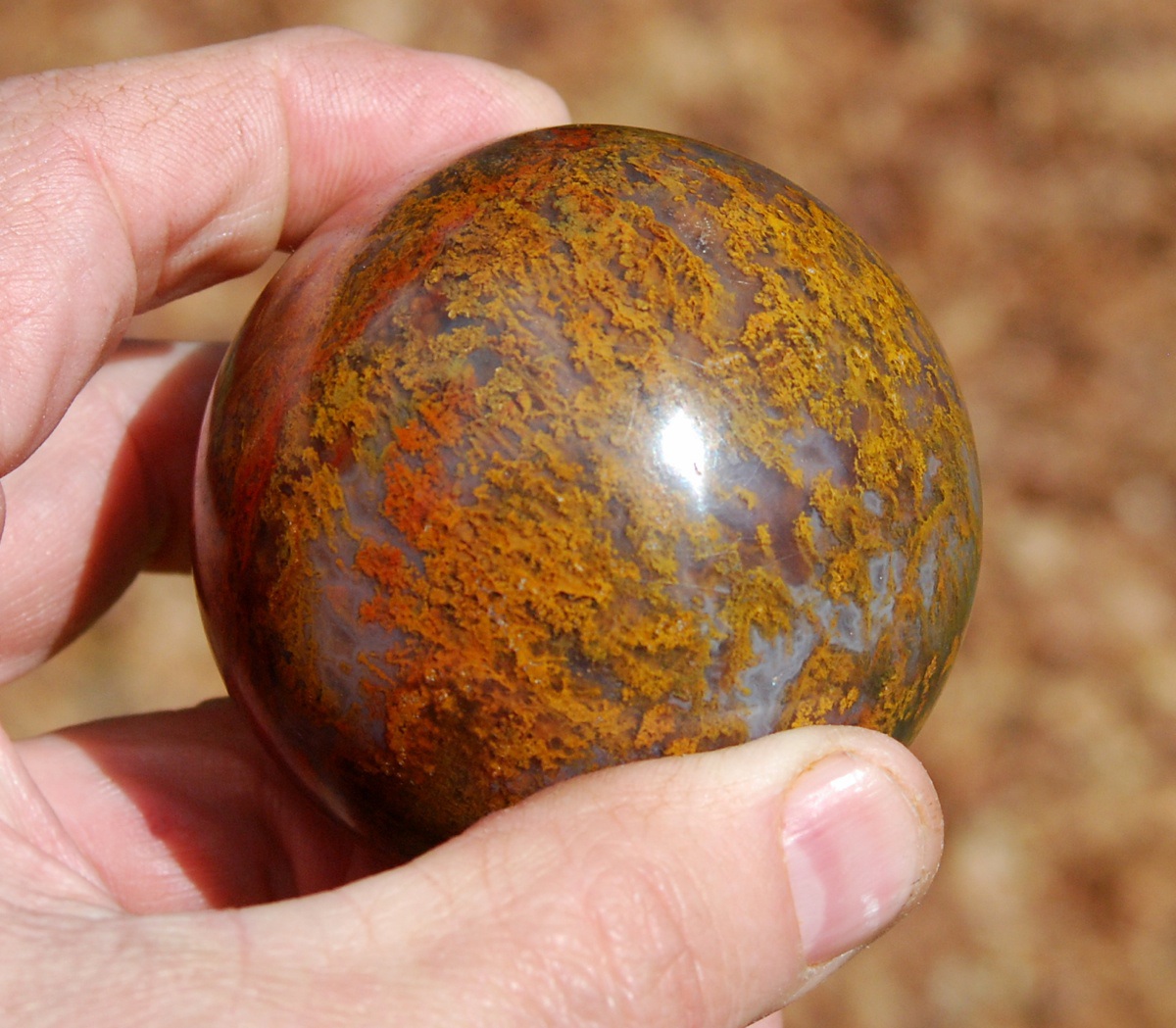 The Big Bend area of Texas is a long way from most places, but it is well worth the visit. The remoteness of the area means that the Stillwell Ranch property doesn’t get excessive pressure from rockhounds. Erosion from occasional flash floods in the area assures that new rocks are gradually exposed on the terrace slopes. So, if you ever visit the Big Bend area, don’t forget to go rock collecting at the Stillwell Ranch. Now that you know what to look for, you won’t be disappointed!
|